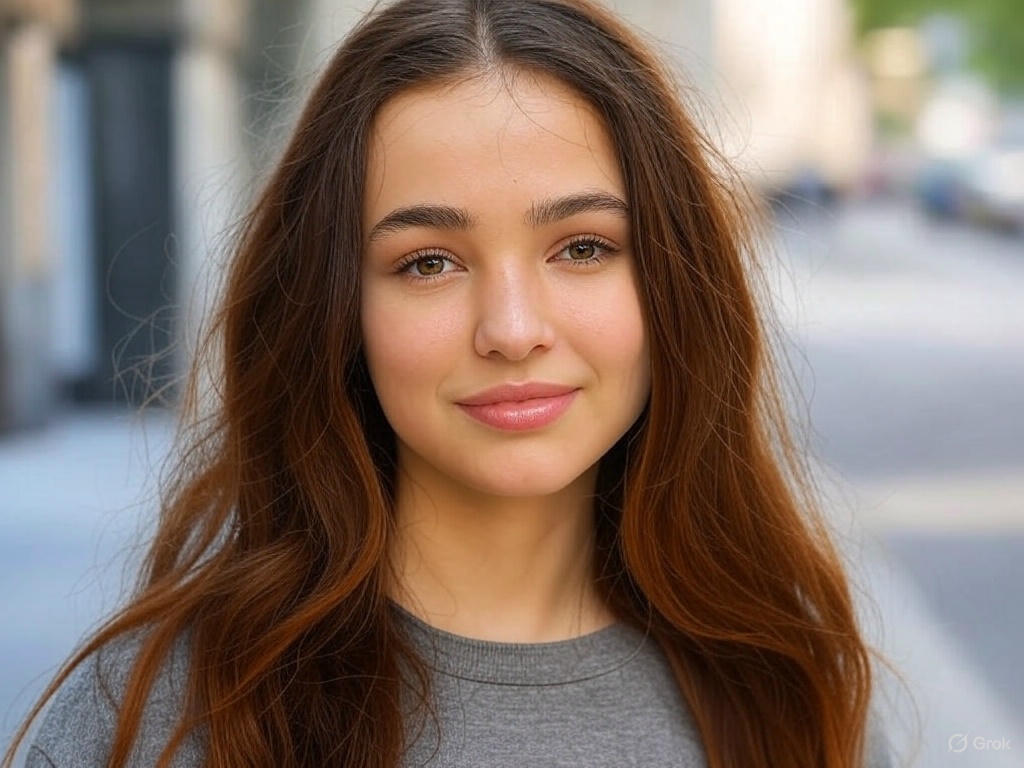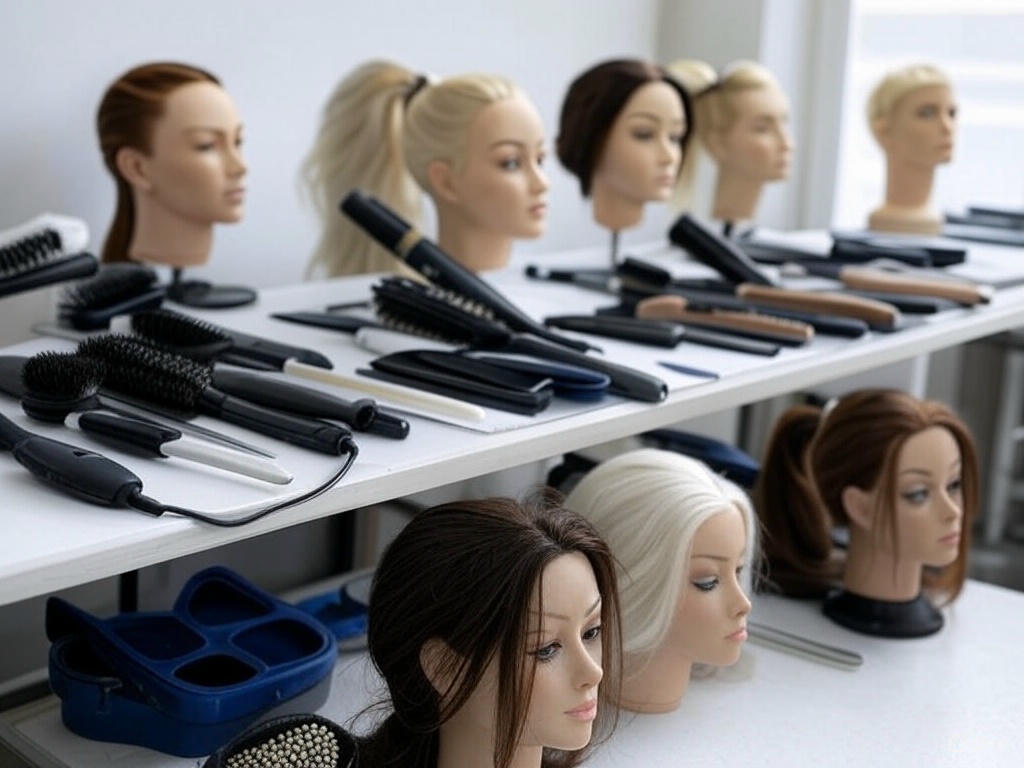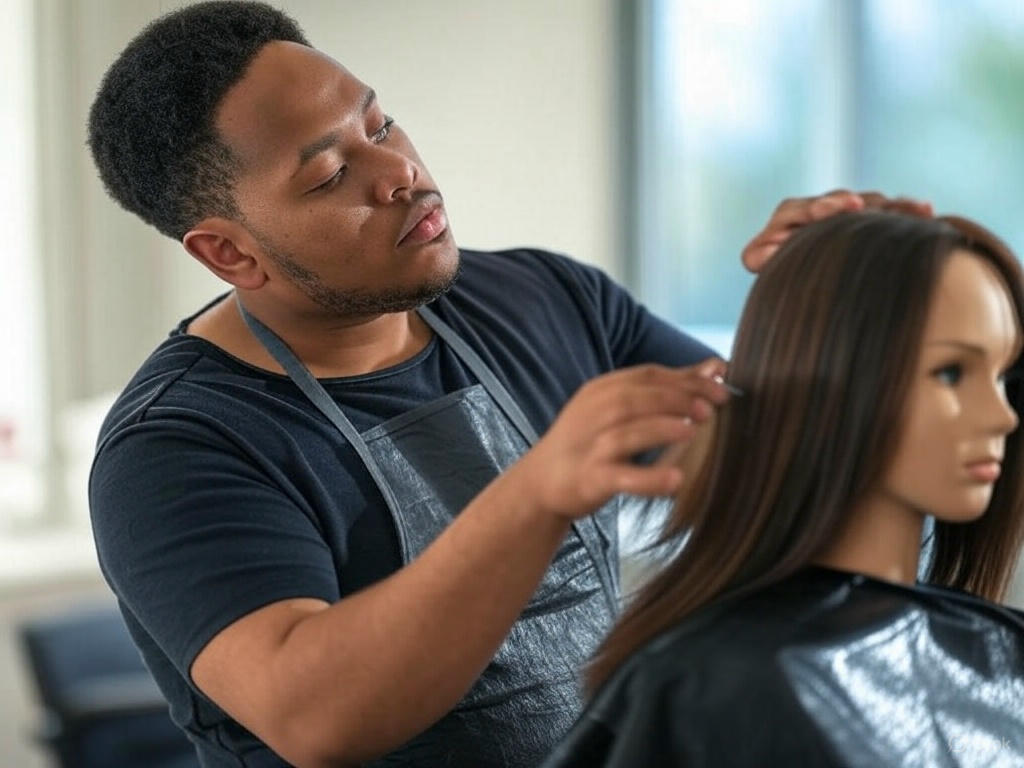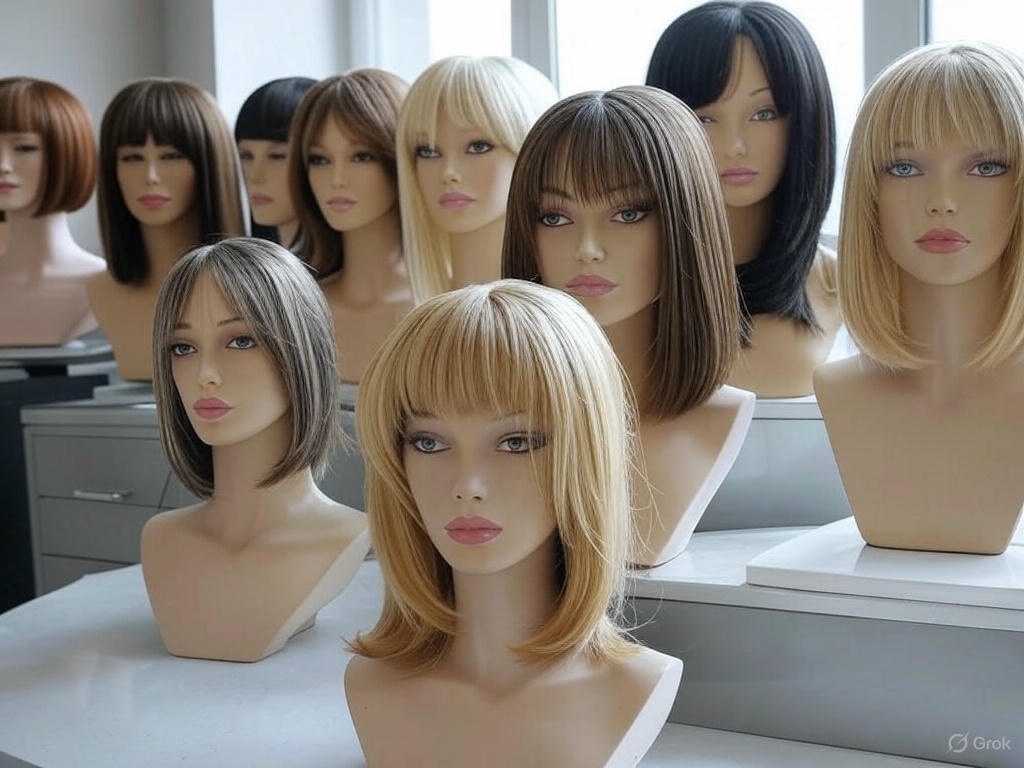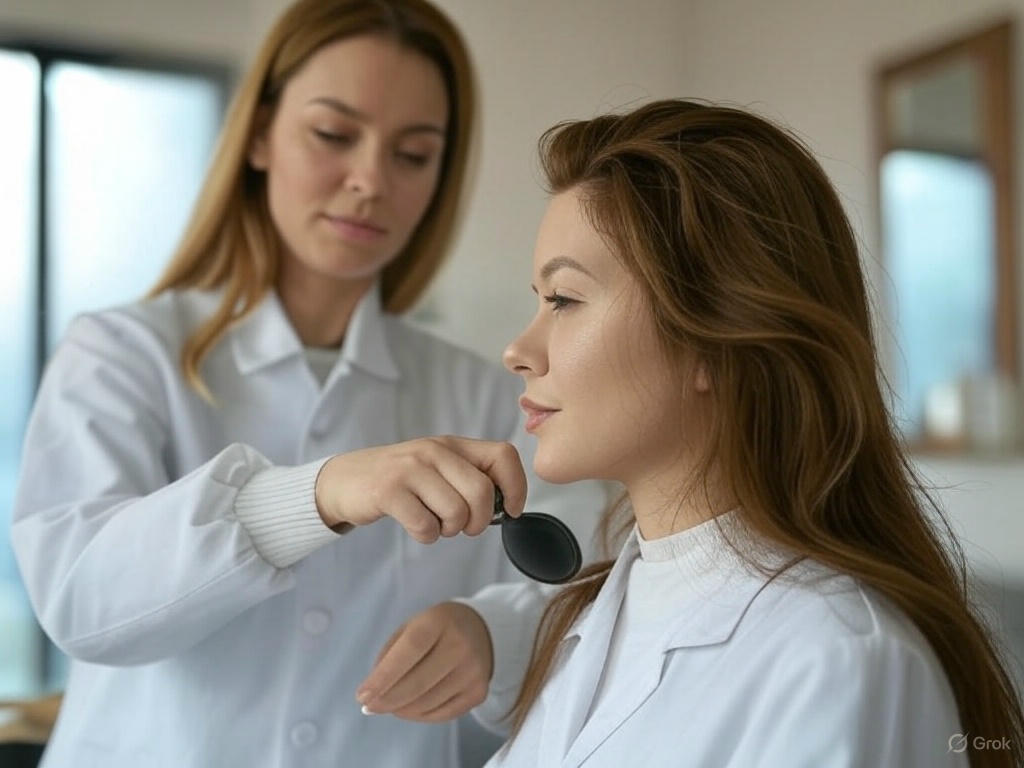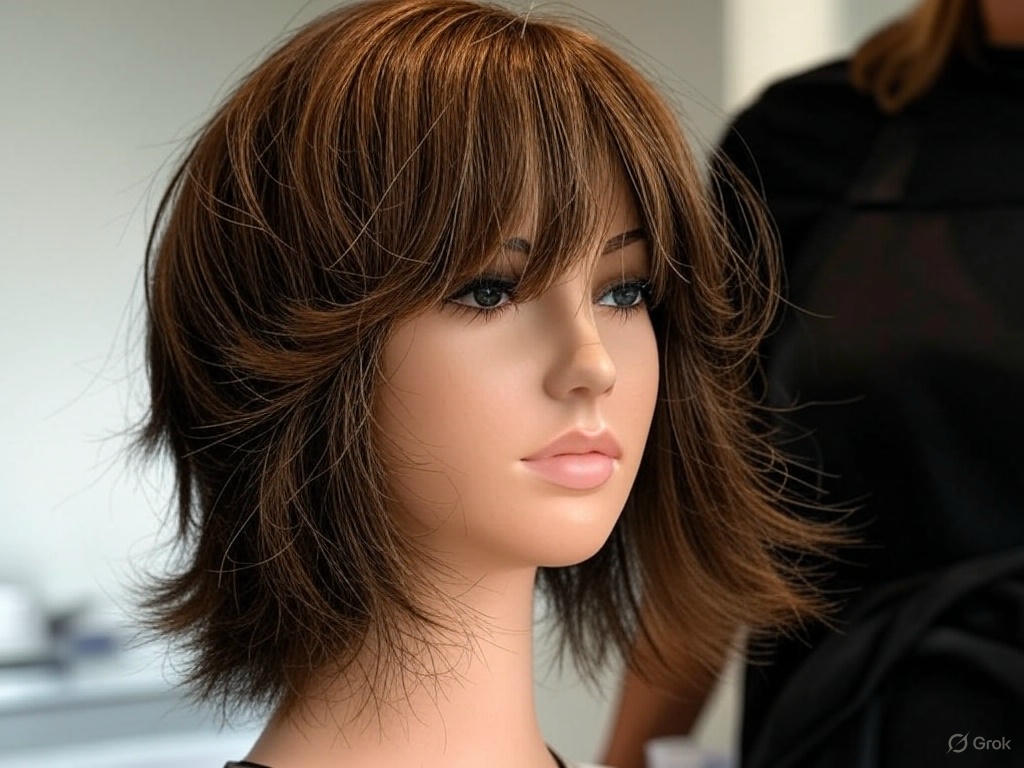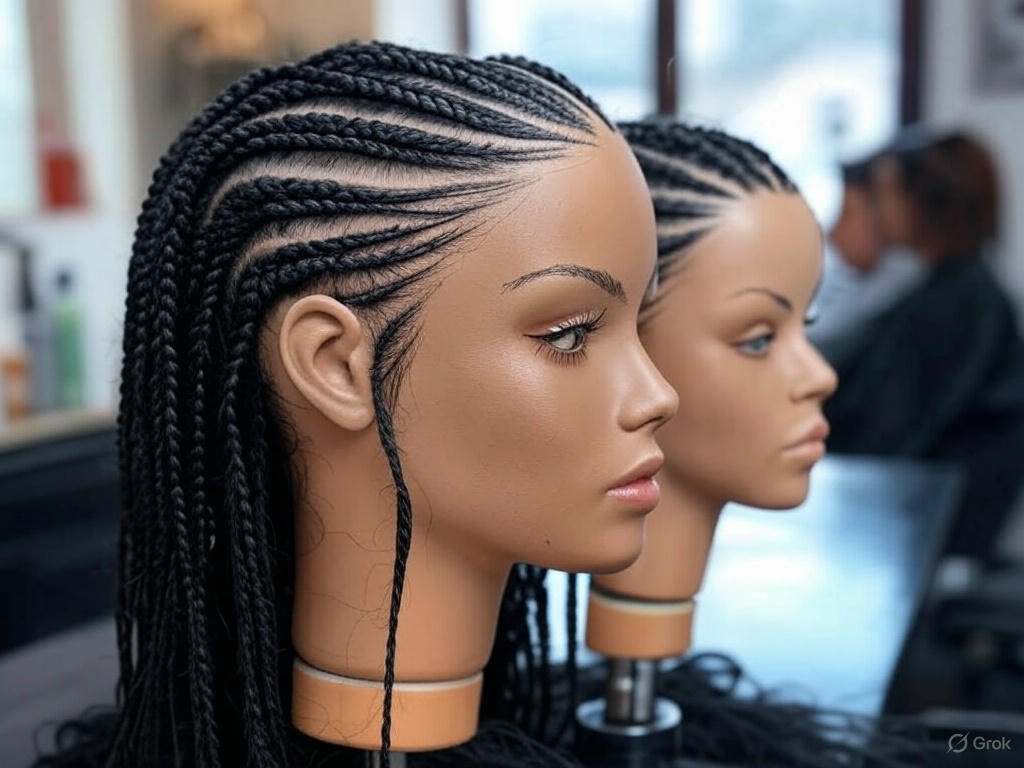Aspiring cosmetologists often start their journey with big dreams, colorful visions, and the desire to make others feel confident through beauty. Before stepping into a salon or managing real client hair, they need a reliable and risk-free way to practice. That’s where hair mannequins come in. These silent teaching tools have been a foundational part of cosmetology education for decades, providing learners with a consistent, realistic medium to refine their skills. In cosmetology school and even in professional settings, hair mannequins are used to build dexterity, practice techniques, and gain the confidence necessary to work with real people.
However, simply having a hair mannequin isn’t enough. Knowing how to use it effectively can drastically impact the speed and quality of skill development. Just like athletes study game tapes or musicians rehearse scales, cosmetology students must use their mannequins with intentional practice. With strategic use, hair mannequins become more than plastic heads with synthetic hair—they transform into stepping stones on the path to mastery.
This article will delve into expert-approved methods for making the most out of hair mannequins. Each section focuses on a different aspect of mannequin-based learning, beginning with choosing the right mannequin, then progressing to foundational techniques, advanced styles, and finally preparation for real-world applications. Through these detailed insights, cosmetology students and professionals alike can learn how to maximize their mannequin practice and level up their craft.
Choosing the Right Hair Mannequin for Practice
Understanding Hair Types and Materials
The journey to mastering cosmetology begins with selecting the right mannequin head. Not all mannequins are created equal, and understanding the distinctions between them is crucial. Hair mannequins come in various hair types such as synthetic, human, or a blend of both. Each type presents its own set of benefits and challenges. Synthetic hair, often made from plastic fibers, is ideal for styling but may not respond well to heat or chemicals. Human hair, on the other hand, offers the most authentic experience because it reacts similarly to real client hair when subjected to coloring, cutting, and heat styling.
Some mannequins have processed human hair, which may still handle well but can have limitations depending on how it was treated. Virgin hair mannequins, which have not undergone chemical treatments, are often preferred by advanced students because they offer the most accurate practice conditions. It is important for learners to identify what their goals are—whether it’s color training, haircutting, or updos—before deciding on the hair type they need.
Evaluating Density and Length for Training Purposes
Density and length are equally important considerations when choosing a mannequin. Mannequins with low hair density might be better for practicing techniques that involve parting or sectioning, whereas high-density mannequins are ideal for styling and braiding. For those just starting out, working with medium-density hair allows for a balance between ease and challenge. Length matters as well. Short hair mannequins are great for practicing men’s cuts or pixie styles, while long-haired mannequins are better suited for curls, waves, and elaborate updos.
There are mannequins specifically designed for barbering, braiding, or color application, each with variations in hairline design, thickness, and scalp structure. These design elements should match the practice goals. For example, if a student wants to improve their balayage technique, a mannequin with well-placed layers and realistic parting spaces will support more precise work.
Assessing Mannequin Head Features and Mounting Options
Beyond the hair itself, the structure of the mannequin head also plays a significant role. Some mannequins come with more defined facial features, ears, and even shoulders. These extras are helpful when practicing hairlines, beard trims, or even makeup. When mannequin heads include shoulders, it becomes easier to visualize and execute real-life styling techniques, such as measuring lengths that would rest against a client’s neck or shoulders.
Mounting options must also be considered. Most training heads require a clamp or stand. A stable base ensures that the mannequin doesn’t shift while cutting or styling, which helps maintain accuracy. Tripod stands, adjustable in height, are ideal for serious learners as they mimic the salon experience more closely than basic clamps. Learners should invest in a quality mount to avoid frustrating disruptions during practice.
Cost vs. Quality: Making a Smart Investment
Cost is another factor that affects selection. Inexpensive mannequins might be tempting, especially for beginners, but they often come with limitations such as poor hair quality, inconsistent density, or shedding. Investing in a mid-range to high-quality mannequin can be more cost-effective in the long run. A durable mannequin with realistic hair not only performs better but also lasts longer and offers a more authentic experience. Reputable brands often have better craftsmanship and hair that withstands repeated treatments and styling sessions.
Some manufacturers provide certifications or detailed descriptions about the origin and quality of the hair, which can guide purchasing decisions. Reading reviews and seeking advice from instructors or licensed stylists can help students make informed choices.
Tailoring Mannequin Selection to Learning Stages
Finally, it’s wise to align the choice of mannequin with the current level of the learner. Beginners should start with mannequins that are forgiving and versatile. These usually have medium-length, medium-density synthetic hair. As skills improve, transitioning to mannequins with higher-grade human hair allows for more advanced practices like highlighting, perming, or precision cutting. By evolving mannequin selection with skill level, students can gradually challenge themselves without feeling overwhelmed.
Choosing the right mannequin is not just about having a head to practice on—it’s about ensuring that every snip, color, and curl helps build the expertise necessary for a successful cosmetology career. With the right foundation in place, learners are set to dive deeper into the technical and creative world of hair artistry.
Mastering the Basics: Foundational Techniques Using Hair Mannequins
Building Muscle Memory Through Repetition
Mastering cosmetology starts with repetition. When practicing on a mannequin head, it becomes clear that consistent practice builds not only skill but also confidence. Students learning the basics of haircutting, blow drying, sectioning, and parting can benefit greatly from repeating those movements until they become second nature. This process trains the hands to move intuitively, improving muscle memory and making it easier to transition those skills to real clients.
Using mannequins repeatedly for the same style or cut can seem redundant at first, but this repetition helps refine control and consistency. Whether it’s a straight-line bob or a simple layer cut, the ability to replicate the style perfectly each time is what separates a novice from a trained stylist. Practicing on different days, in different moods, and with varying lighting allows learners to prepare for real-life variability in salon conditions.
The Importance of Sectioning and Parting Techniques
Sectioning and parting form the skeleton of most hairstyles. Whether preparing the hair for color, curls, or cutting, the way it is divided determines the outcome. Practicing clean sectioning with clips and combs on a mannequin helps students build dexterity and precision. Even though mannequins don’t move like live clients, they allow learners to experiment with symmetry, balance, and layering, all while managing hair volume effectively.
Mannequins are especially helpful when students are learning to create even tension across all sections. Poor tension can result in uneven cuts, jagged edges, or inconsistent layering. By repeatedly practicing how to hold and section the hair properly, learners build foundational habits that become essential in client work.
Learning Proper Scissor and Razor Handling
Tool handling plays a massive role in cosmetology, and mannequins are ideal for developing these skills without the risk of injury or client dissatisfaction. Whether it’s a pair of shears, a thinning scissor, or a razor, knowing how to grip, move, and apply these tools takes time to master.
Students can use mannequins to refine their grip on scissors and learn how to cut at angles that produce desired effects, from soft edges to blunt lines. Similarly, razors demand control and pressure accuracy. With mannequin practice, learners gain the chance to understand how their hands interact with hair texture, direction, and length.
Practicing tool techniques on different mannequin types allows for a diverse learning experience. Coarser mannequin hair may resist blades differently than finer strands, simulating how real-world clients will vary. The repetition gives confidence and trains stylists to stay calm and steady, even under pressure.
Blow-Drying and Styling with Heat Tools
Blow-drying is often underestimated but is one of the first skills taught in cosmetology school. Mannequins help learners understand airflow direction, brush control, and timing. Starting with towel-dried hair and finishing with a polished look involves coordination and speed. Mannequins with human hair allow students to experiment with different techniques such as round-brushing for volume or paddle brushing for sleekness.
Using curling irons, straighteners, or wands on mannequins teaches heat control and safety. These tools can damage hair if used improperly, so having a non-living practice model helps build awareness. Learners can also see how product application interacts with heat. From protectants to smoothing creams, practicing the order and amount of product needed helps them become more deliberate in their styling process.
Creating Basic Braids and Updos
Braiding is an essential skill in cosmetology, and mannequins are perfect for practice. Starting with three-strand braids and moving to French, Dutch, or fishtail styles, learners can use mannequins to understand finger placement, section control, and tension. Practicing different braids on mannequins with various hair lengths or textures expands a stylist’s versatility.
Updos can be intimidating without a steady foundation, but practicing on mannequins removes the pressure of working on a live client. Pinning techniques, volume manipulation, and securing hair for long-lasting styles are all easier to master when practiced repeatedly. Mannequins help stylists explore creativity in formal styling without the time constraint of a real appointment.
Maintaining Clean Workspace Habits
Using a mannequin for practice isn’t just about building technical skills; it’s also about developing professional habits. Keeping a clean workspace while styling is a skill in itself. Mannequin training provides a perfect scenario for learners to practice wiping tools, disposing of cut hair, managing clips, and organizing brushes while working. These habits will carry over into client sessions and affect the stylist’s efficiency and professionalism.
Even cleaning the mannequin and maintaining tools between sessions teaches responsibility. Sanitizing combs, spraying down surfaces, and detangling before storage are real-world skills that get overlooked but are essential to salon operations. Through mannequin practice, learners begin to appreciate the discipline behind the beauty.
Simulating Real Appointments for Timing and Flow
As skills develop, students can simulate real appointments with their mannequins. Setting timers and pretending to greet, consult, and deliver a style within a certain period helps develop time management. Even simple things like making eye contact with the mannequin in the mirror or pretending to explain steps aloud help prepare students for the client experience.
By adding a realistic structure to mannequin practice, learners create muscle memory not only in technique but also in communication and presence. These simulations make the transition from school to salon smoother and more professional.
Progressing from Practice to Precision
Once learners feel comfortable with basic techniques, mannequin training shifts from learning to perfecting. This is where refinements occur. The ability to deliver a uniform haircut, execute symmetrical braids, or give a frizz-free blowout becomes the focus. Practicing these with attention to small details turns basic competency into polished professionalism.
Mannequins support these improvements by offering a no-risk environment to slow down, make corrections, and try again. This patience and repetition create stylists who don’t just understand what to do, but why each step matters.
Taking It to the Next Level: Advanced Styling Techniques on Hair Mannequins
Exploring Advanced Layering and Texturizing Methods
Once the fundamentals are well established, students often feel ready to explore more creative and challenging territory. One of the first steps in this progression is mastering advanced layering and texturizing techniques. While basic cuts focus on shape and balance, advanced techniques aim to create movement, softness, and personalized texture.
Using a mannequin, stylists can experiment with slide cutting, point cutting, and notching to learn how each technique changes the way hair behaves. These methods require an understanding of how light and gravity affect hair once it’s been styled. For example, slicing removes bulk while maintaining length, which creates flow. Mannequins give learners the chance to try these adjustments repeatedly until they understand how to sculpt the hair rather than simply cut it.
Razor techniques also fall into this advanced category. Razors can provide a softer finish than scissors, but they demand a steady hand and clear vision. Practicing on a mannequin allows the stylist to observe how different blade angles affect texture, especially in layered or shaggy styles. Because mannequin hair is forgiving, stylists can explore how aggressive or gentle their approach needs to be for different effects.
Creative Color Applications and Blending Techniques
Advanced coloring involves more than applying dye to roots. Mannequins serve as excellent practice models for balayage, ombré, highlighting, lowlighting, and creative color placements. These applications require precision and an eye for harmony, which can only be developed through experience.
Balayage, for example, involves sweeping color onto the hair in a freehand manner. When practicing on a mannequin, learners can adjust their wrist angles, pressure, and saturation to develop a controlled but natural effect. The ability to step back and assess the balance of highlights across the mannequin’s head helps the stylist understand where to add depth and where to create lightness.
Blending techniques like shadow roots, baby lights, and color melting are ideal for mannequin training. These styles depend on seamless transitions between shades, which take time to perfect. Mannequins allow learners to visualize how products interact over time and how to control fade and tone through proper formulation.
Even fashion colors, such as pastels and bold neons, can be explored on mannequins to study how color theory plays out in real time. Stylists learn how pre-lightening, toning, and layering different shades affect the final result. Mistakes are part of the process, and mannequins allow those mistakes without risk to a real client.
Experimenting with Cultural and Editorial Styles
Cosmetology is not just about salon work. For many, the ultimate goal is to style hair for fashion shows, photoshoots, or multicultural events. Mannequins offer a window into that world by providing a safe space to practice intricate and culturally significant hairstyles.
Editorial looks often require unusual styling, such as exaggerated volume, asymmetry, or geometric cuts. These styles challenge the stylist to think outside of everyday norms and push boundaries. Mannequins allow stylists to practice backcombing, teasing, and setting techniques to build and control volume without the pressure of perfection.
Cultural hairstyles such as braids, locs, twists, and knots require both skill and cultural sensitivity. Practicing on mannequins of different textures—straight, wavy, curly, or coily—enables stylists to become more inclusive in their offerings. It also trains them to handle various hair types with care and respect. Learning how to part tightly and evenly, how to work in tension without causing breakage, and how to build long-lasting styles all begins with mannequin work.
Perfecting Bridal and Formal Updos
Styling for formal occasions is one of the most in-demand areas in the beauty industry. Whether for weddings, proms, or red carpet events, clients expect elegant, durable, and picture-perfect hairstyles. Mannequin practice is vital in mastering updos because these styles are often intricate and time-consuming.
Classic chignons, French rolls, braided crowns, and cascading curls all require multiple steps, clean execution, and strong structural knowledge. Practicing on mannequins allows stylists to get familiar with hair padding, pin placement, and balance. These elements make the difference between a look that holds for hours and one that collapses quickly.
In mannequin practice, stylists can repeat the same updo several times, refining placement, adjusting volume, and trying different finishes like shine sprays or textured powders. This repetition creates the muscle memory needed to reproduce styles quickly and with less stress. Mannequins also provide a platform to build portfolios—photos of well-styled mannequins can be used to attract future bridal clients.
Incorporating Hair Accessories and Embellishments
Styling doesn’t end with hair. Accessories like flowers, beads, combs, veils, and decorative pins elevate a look from everyday to exceptional. Learning how to incorporate these without disturbing the structure of the hairstyle is a skill that improves with practice.
Using mannequins, stylists can explore where to position accessories to enhance rather than overwhelm the style. For bridal hair, placement matters—veils must sit securely without shifting, and floral elements must balance the hairstyle without making it top-heavy. Stylists can also experiment with symmetry, learning how to decorate one side of the head or balance pieces across both.
Mannequins also help stylists prepare for client consultations. When a bride brings in an accessory, the stylist who has already practiced its placement on a mannequin can offer confident recommendations and creative options.
Simulating High-Pressure Scenarios
Creativity often gets tested under pressure. In the real world, stylists face deadlines, distractions, and last-minute changes. Mannequins allow learners to simulate high-pressure conditions to prepare for those moments. Whether it’s creating an updo in 20 minutes or improvising a damaged section of hair, mannequin practice can mimic real salon stressors.
Some students even participate in mannequin challenges or competitions where they have to style within a limited time or using only certain tools. These simulations push stylists to think fast, solve problems, and stay composed—all critical traits in a busy professional environment.
Styling under pressure builds resilience. When stylists know they’ve practiced through the most stressful situations, they walk into real appointments with quiet confidence. That confidence often becomes the foundation for success, no matter how elaborate the request.
From Mannequin to Mastery: Bridging Practice and Real-World Cosmetology
Building Client Confidence through Mannequin Mastery
For any aspiring stylist, the leap from practicing on mannequins to working on real clients can feel both thrilling and intimidating. However, the hours spent perfecting cuts, styles, and colors on mannequins form the solid foundation of confidence. Mannequins allow for endless repetition, trial and error, and experimentation without fear of disappointing a live client. This creates muscle memory and technique familiarity that becomes second nature behind the chair.
Clients often trust stylists who project calm authority. That confidence is not born overnight—it is cultivated through persistent practice. When a stylist has recreated a specific updo dozens of times on a mannequin, they approach a bride’s hairstyle with assurance and professionalism. That mastery shows in every movement, from sectioning to finishing spray, and it gives clients a reason to relax and enjoy the experience.
Additionally, practicing consultations using mannequins helps students refine their communication. They can role-play how to explain a cut, describe color maintenance, or recommend a style change, all while physically demonstrating on their mannequin. This improves both their technical and interpersonal skill sets, which are equally important in client relationships.
Transitioning from Controlled Practice to Live Scenarios
Styling hair in a classroom or at home on a mannequin offers total control—there are no time constraints, environmental pressures, or unpredictable client reactions. In the salon, however, the dynamic shifts. Real hair behaves differently. Clients move, speak, ask questions, and have emotions tied to their hair. The stylist must adapt quickly while still delivering precision.
To ease this transition, many cosmetology programs begin introducing clients into training salons only after a strong foundation has been built on mannequins. This phased approach helps stylists gain comfort by starting in a predictable environment and slowly adding complexity. Those who have fully engaged with mannequin training tend to feel more prepared when they finally step behind the chair.
Unexpected challenges—such as uneven natural hairlines, product sensitivities, or emotional client responses—can throw a new stylist off balance. However, those who have explored every possible technique on mannequins often find that they already know how to adjust. Whether it’s changing the layering angle, recalculating processing time, or gently offering an alternative style, experience on mannequins gives stylists the tools to navigate real-world unpredictability with professionalism.
Creating a Portfolio that Attracts Opportunities
In a competitive field like cosmetology, first impressions matter. A strong portfolio can open doors, whether applying for a salon position, launching a freelance career, or joining an editorial team. Mannequins play a key role in this creative showcase. Every perfectly blended balayage, intricate updo, or artistic braid done on a mannequin can be photographed and added to a stylist’s professional portfolio.
High-quality mannequin images demonstrate technique, range, and an eye for detail. When presented well—on a website, digital profile, or printed lookbook—these photos give potential employers or clients a glimpse into the stylist’s style and capabilities. They also show commitment to the craft, as they reflect hours of intentional practice.
Some stylists use mannequin heads to create themed collections, such as wedding styles, fashion-forward color palettes, or texture-specific cuts. These collections not only display skill but also show creative direction and branding potential. As stylists build their names, consistent imagery from mannequin practice can support a strong professional identity.
Using Mannequin Work for Client Consultations
Stylists who use mannequins during consultations offer clients a visual roadmap of what to expect. By demonstrating ideas on a mannequin, they can show a specific braid pattern, explain color placement, or walk through the steps of a complex updo. This eliminates miscommunication and builds trust.
Clients often struggle to describe what they want. They may bring reference photos or use unclear terminology. A mannequin helps bridge the gap between imagination and reality. Stylists can demonstrate subtle changes—like adding fringe or tapering the ends—on a mannequin before making irreversible changes to the client’s hair. This interactive consultation fosters collaboration and reduces misunderstandings.
Moreover, mannequins can be used to educate clients. A stylist might show the impact of heat damage or product buildup using a previously treated mannequin head. These visual tools empower clients to care for their hair and make informed choices. Stylists who incorporate mannequin demonstrations elevate the client experience and position themselves as knowledgeable guides rather than just service providers.
Gaining Confidence to Take Creative Risks
In the professional world, stylists are often encouraged to push creative boundaries. Clients want innovation. Salons value trendsetters. Editorial work requires drama. All of this takes courage—and that courage is developed in the mannequin phase.
Stylists who have experimented with vivid colors, asymmetrical cuts, avant-garde shapes, and cultural styles on mannequins are more prepared to bring that creativity to life when opportunities arise. They know how to manipulate texture, shape, and volume for maximum effect because they’ve already done the work in a safe, controlled environment.
Additionally, stylists who push themselves on mannequins build creative resilience. Not every idea works out. Not every style looks great at first. But through trial and error, they develop the ability to critique their own work, refine it, and try again. This artistic process becomes a core strength when working in fashion, competition, or high-profile settings where boldness is celebrated.
Mannequins as a Lifelong Learning Tool
Even seasoned professionals return to mannequins when learning new trends, tools, or techniques. A new cutting method, a trending style on social media, or a product launch can all be practiced on mannequins before bringing them to the salon floor. In this way, mannequins continue to support career growth long after cosmetology school ends.
Some professionals even keep mannequins at their stations or in their studios to test new ideas or prepare for upcoming events. They treat them as sketchbooks—spaces to try, test, and tweak. The mannequin remains a judgment-free tool for exploration.
When used regularly, mannequins help stylists stay relevant in a fast-moving industry. They allow experimentation without the risk of compromising a client’s hair, time, or expectations. For lifelong learners and innovators, mannequins are more than training tools—they are partners in evolution.
